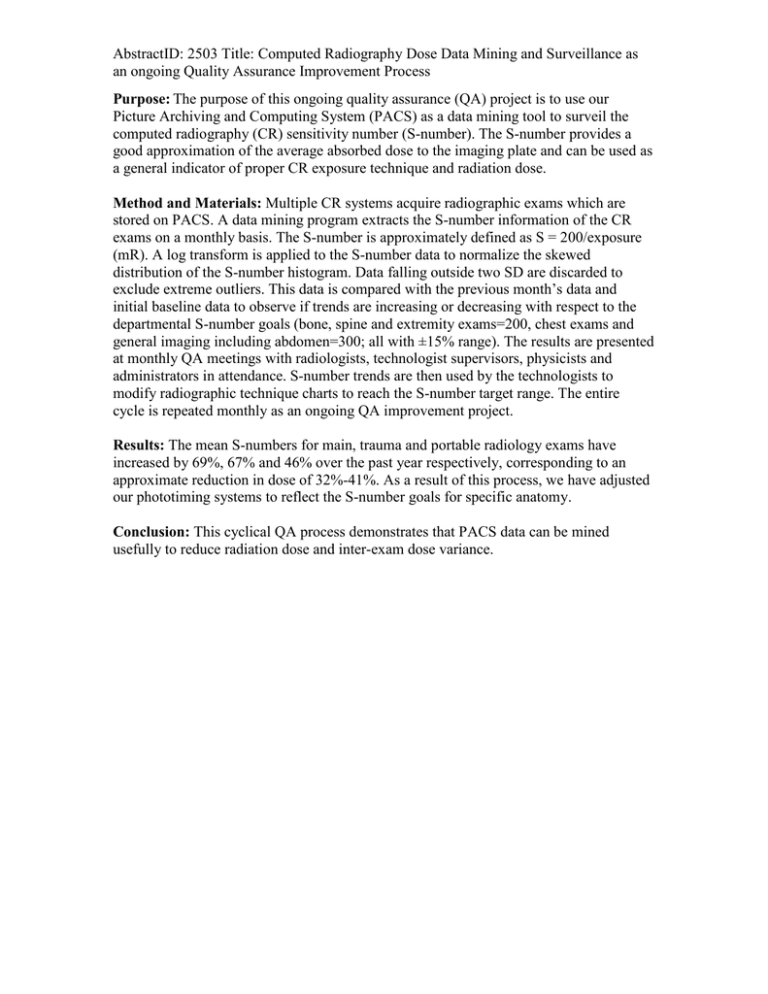AbstractID: 2503 Title: Computed Radiography Dose Data Mining and Surveillance... an ongoing Quality Assurance Improvement Process
advertisement

AbstractID: 2503 Title: Computed Radiography Dose Data Mining and Surveillance as an ongoing Quality Assurance Improvement Process Purpose: The purpose of this ongoing quality assurance (QA) project is to use our Picture Archiving and Computing System (PACS) as a data mining tool to surveil the computed radiography (CR) sensitivity number (S-number). The S-number provides a good approximation of the average absorbed dose to the imaging plate and can be used as a general indicator of proper CR exposure technique and radiation dose. Method and Materials: Multiple CR systems acquire radiographic exams which are stored on PACS. A data mining program extracts the S-number information of the CR exams on a monthly basis. The S-number is approximately defined as S = 200/exposure (mR). A log transform is applied to the S-number data to normalize the skewed distribution of the S-number histogram. Data falling outside two SD are discarded to exclude extreme outliers. This data is compared with the previous month’s data and initial baseline data to observe if trends are increasing or decreasing with respect to the departmental S-number goals (bone, spine and extremity exams=200, chest exams and general imaging including abdomen=300; all with ±15% range). The results are presented at monthly QA meetings with radiologists, technologist supervisors, physicists and administrators in attendance. S-number trends are then used by the technologists to modify radiographic technique charts to reach the S-number target range. The entire cycle is repeated monthly as an ongoing QA improvement project. Results: The mean S-numbers for main, trauma and portable radiology exams have increased by 69%, 67% and 46% over the past year respectively, corresponding to an approximate reduction in dose of 32%-41%. As a result of this process, we have adjusted our phototiming systems to reflect the S-number goals for specific anatomy. Conclusion: This cyclical QA process demonstrates that PACS data can be mined usefully to reduce radiation dose and inter-exam dose variance.




